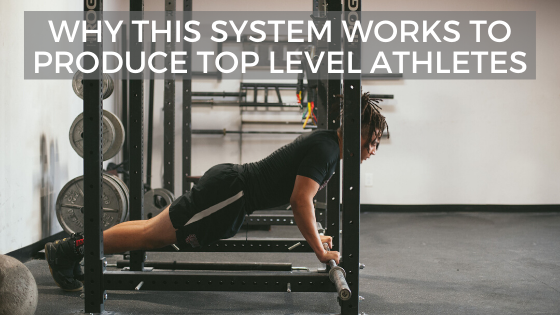Many years ago, a system for developing athletic ability called the rule of three was created and first seen in Russia: the first three years of an athlete’s preparation they do not specialize, but focus solely on general physical preparation. Three years of developing general skills and components of fitness before picking up a barbell.
This was the foundation of a system to develop high level athletic talent, and top sport scientists were assigned to first identify, then develop, high sporting achievement. Youth would attend sport school and after three years of general development they would play a sport that best fit their physical and mental abilities. This approach to athletic development was systemized from age 10 to 32, classified by level of athlete. The amount of time they spend on the development of general physical skills prior to directing their training toward a specific sport is worth noting.
Why is it easier for someone who is bilingual to pick up another language? They see overlap and patterns, have a toolbox of skills to learn from which reinforce each other, and the process of learning the new skill is familiar. For these same reasons it is important for youth athletes to develop a broad range of athletic skills prior to specializing. Take time to accumulate a large volume of work and develop a great foundation; then the motor abilities will last and be easier to recall as an athlete progresses.
Pay attention to the trap of early age specialization. As the old saying goes, “soon ripe, soon rotten.” If an athlete is a single sport athlete, that is okay. There is nothing wrong with developing high level skills, but keep in mind that a student athlete’s physical education should be well rounded and complete. To beat the analogy into the ground, a pyramid is only as tall as its base. All children should have a foundation of relative strength (how strong they are relative to their body weight), coordination, flexibility, agility, and aerobic endurance. Those that can pull from their background and more easily learn new skills – kids who are complete athletes – will have the upper hand.
Here is a test for your middle school athletes to see if their general fitness on track:
-
Skip 50 meters
-
Throw and catch a ball accurately
-
Be able to navigate over and under obstacles
-
Jump rope for five minutes without breaking
-
Forward roll and backward roll
-
3×10 Push up against a barbell in the J hooks at the bottom of the rack
-
3×5 strict pull ups
-
Goblet squat ⅓ of their body weight for 20 reps
For an untrained middle schooler, this is a good benchmark to start with. Basic preparedness is continually lacking in athletes who play their sport at a high level. At some point this shows up, either manifested as an injury or getting passed up by peers on a team.
With a little work and proper progressions this doesn’t have to happen.
Sources
Yessis, M., Ph.D. (2006). Build a better athlete: What’s wrong with American Sports and how to
fix it. USA: Equilibrium Books.
Yessis, M., Ph.D. (2008). Secrets of Russian sports fitness and training. Michigan: Ultimate
Athlete Concepts
A Review – “Soviet Training and Recovery Methods”
Further Reading
Using Science to Develop Athletic Ability

